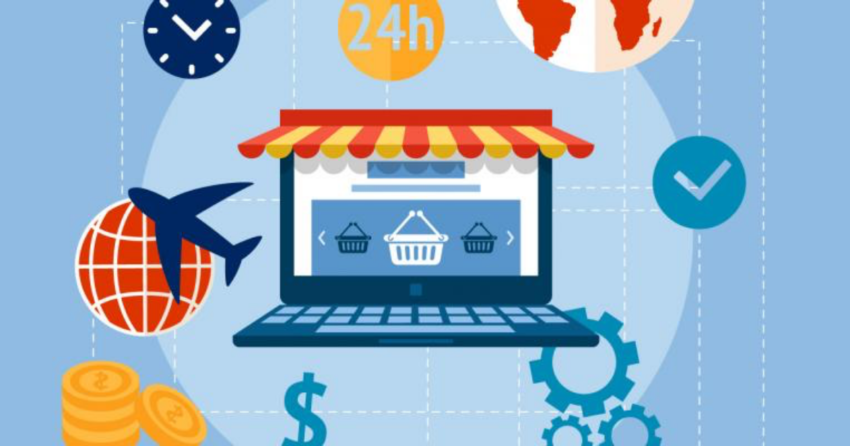How to Build Your First Online Store in 2025

Building your first online store is more accessible than ever. Thanks to user-friendly platforms and tools, you don’t need a tech background or big investment to start. Whether you’re dreaming of selling handmade crafts, fitness programs, or dropshipping trending items, launching an e-commerce business opens up limitless possibilities.
Let’s walk you through the exact steps to build your first online store — with zero fluff.
Step 1: Choose Your Business Model
Before you start designing your store, you need to decide what you’re selling and how you’ll fulfill orders.
- E-commerce (traditional): You create, store, and ship the products yourself.
- Dropshipping: You sell products without handling inventory — your supplier ships items directly to your customers. Learn more about how dropshipping works via Shopify’s in-depth guide.
Also decide whether you’re selling:
- Physical products (e.g., clothing, candles)
- Digital products (e.g., eBooks, courses)
- Services (e.g., coaching, consulting)
Your business model affects everything — from platform choice to profit margins — so be strategic here.
Step 2: Select Your E-commerce Platform
There are plenty of tools out there to help you build your store, but the best one depends on your goals.
🛒 Shopify
One of the most beginner-friendly platforms. It’s an all-in-one solution with themes, hosting, payments, and shipping built in.
- Easy drag-and-drop builder
- Tons of apps and themes
- Free trial available (no credit card required)
🌐 WooCommerce
If you’re already familiar with WordPress, WooCommerce is a powerful free plugin that turns your site into a store.
- Full control and flexibility
- Massive library of plugins
- Great for SEO and custom development
🚀 BigCommerce
A scalable platform great for growing brands. It offers built-in features for SEO, omnichannel selling, and more.
Check out this detailed comparison of top e-commerce platforms to help you make the right choice.
Step 3: Set Up Your Online Store
Once you’ve picked your platform, it’s time to bring your store to life.
- Choose a domain name: Use a name that’s short, memorable, and reflects your brand. You can buy a domain directly through Shopify, Namecheap, or Google Domains.
- Set up hosting: This is only needed if you’re using a self-hosted platform like WooCommerce.
- Customize your store: Pick a theme, adjust colors, upload a logo, and create your homepage. Platforms like Shopify and Squarespace have mobile-optimized templates ready to go.
Step 4: Add Products to Your Store
Upload high-quality photos and write clear, benefit-driven product descriptions. Your content should:
- Explain what the product is
- Show how it improves your customer’s life
- Use keywords naturally for SEO
Create categories that make browsing easier and use apps or tools like Canva to design eye-catching images.
💡Pro Tip: Use a pricing strategy that covers costs, adds margin, and stays competitive. Tools like Oberlo’s pricing formula can help.
Step 5: Set Up Payment Gateways and Shipping
To get paid, integrate payment gateways like:
- Stripe: Ideal for credit/debit cards
- PayPal: Popular and trusted by customers
- Shopify Payments: Available if you’re using Shopify and want a built-in solution
Then configure your shipping:
- Define your zones and rates (flat rate, real-time, or free shipping)
- Use tools like Shippo to streamline shipping and offer label printing
Also consider eco-conscious options. For example, Sendle offers carbon-neutral shipping.
Step 6: Test and Launch Your Store
Before going live:
- Place test orders to verify checkout
- Check how your site looks on mobile
- Fix broken links, typos, and slow-loading pages
Use a checklist like this one by BigCommerce to ensure nothing’s missed.
When ready, hit publish — and launch with a bang by announcing on social media and emailing friends and family.
Step 7: Market Your Online Store
No sales will happen unless people know your store exists.
- SEO: Use keyword research tools like Ubersuggest or Google Keyword Planner to optimize your product pages.
- Social Media: Post regularly on Instagram, TikTok, or Pinterest. Run giveaways or partner with micro-influencers.
- Email marketing: Set up a welcome email series with platforms like Mailchimp or MailerLite.
- Blogging: Educate your audience and drive organic traffic. Use content to build trust and drive search engine visibility.
Building your first online store might seem overwhelming — but with the right tools and guidance, you’ll be up and running in no time. Focus on providing value, keeping the customer experience smooth, and learning as you grow.
Start small. Stay consistent. And most importantly — launch.
🔗 Want more resources like this? Check out ourinternetbusiness.com for strategies, guides, and online growth tips.



